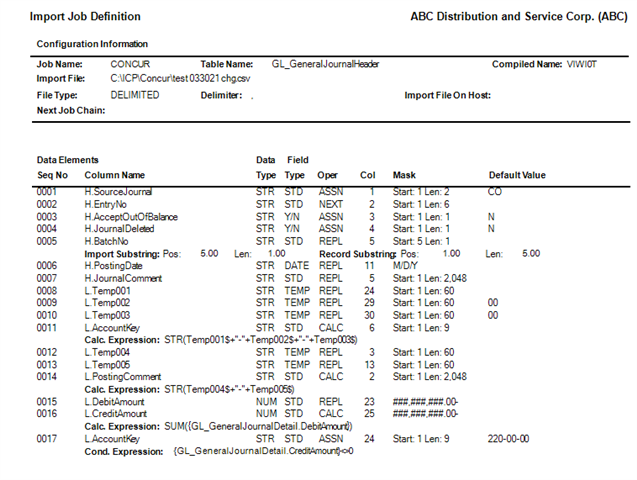I'm trying to import a journal entry. I've calculated the Debit Account number by combining other fields to make the complete account and that works.
Now I need to total all the debits to get the credit amount and then assign the credit account number.
I tried in fields 16 and 17 to "Sum(debits)" and assign the account number if the credit amount <>0.
that does not work.


